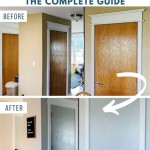What Colors Go Together in Interior Design?
Interior design hinges on creating harmonious and visually appealing spaces. A crucial aspect of this is color selection. While personal preference plays a role, understanding color harmony and the principles of color theory can elevate a space from ordinary to exceptional. This article explores the fundamental concepts of color theory and provides practical guidance on creating aesthetically pleasing color palettes for interior design.
The Color Wheel and its Applications
The color wheel is a foundational tool in understanding color relationships. It arranges colors in a circular pattern, showcasing their inherent connections and contrasts. Primary colors (red, yellow, blue) form the foundation of the wheel, while secondary colors (green, orange, purple) are created by mixing two primary colors. Tertiary colors, resulting from mixing a primary and a secondary color, enrich the color spectrum further. Understanding the color wheel facilitates the selection of harmonious color pairings for interior design.
Color Harmony and its Types
Color harmony refers to the pleasing combination of colors that create a visually balanced and cohesive design. Several color harmony types exist, offering different aesthetic and emotional effects:
-
Analogous:
This harmony utilizes colors adjacent to each other on the color wheel. These colors create a sense of calm and unity, often used in serene and relaxing spaces. -
Complementary:
This harmony combines colors opposite each other on the color wheel. Complementary colors offer high contrast and visual excitement, often used to create focal points or inject energy into a space. -
Triadic:
This harmony uses three colors evenly spaced on the color wheel. Triadic color combinations offer a lively and balanced effect, suitable for creating engaging and dynamic interiors. -
Split Complementary:
This harmony utilizes one color and two colors adjacent to its complement. It provides a balance between contrast and harmony, offering visual interest without overwhelming the space. -
Tetradic:
This harmony combines four colors, two pairs of complements on the color wheel. Tetradic schemes offer a rich and complex visual experience, requiring careful consideration of color balance and focal points.
Practical Tips for Color Selection
Beyond color theory, practical considerations guide effective color selection for interior design:
-
Room Function:
The intended use of a space influences color choice. Warm colors like reds and oranges can stimulate energy in social areas, while cool colors like blues and greens promote relaxation in bedrooms. -
Natural Light:
The amount of natural light entering a room affects color perception. Darker colors can absorb light, making a room feel smaller and more intimate. Lighter colors reflect light, making a room feel larger and brighter. -
Personal Preferences:
Ultimately, color selection should reflect personal taste and lifestyle. Incorporating colors that evoke positive emotions and align with the occupants' aesthetic preferences is vital. -
Color Psychology:
Certain colors are associated with specific emotions and feelings. Understanding the psychological impact of colors can help create the desired atmosphere and mood within a space. For instance, blue is often linked to tranquility, while yellow is associated with happiness and optimism. -
Color Balance:
Using a dominant color for walls, a secondary color for furniture, and an accent color for smaller details creates visual balance and depth within a space. -
Testing and Samples:
Before committing to a color scheme, it is advisable to use color swatches or paint samples to visualize the effect of the chosen colors in the specific space. This allows for adjustments and ensures the chosen colors complement the existing furniture and décor.
Mastering color theory and applying practical tips can create a visually stunning and emotionally resonating interior design. Remember, color selection is a collaborative process involving personal preferences, functional considerations, and an understanding of color harmony. By embracing these principles, interior designers can transform spaces into havens of beauty and well-being.

30 Living Room Color Ideas Best Paint Decor Colors For Rooms

Choosing Right Colors How To Use Psychology For Interior Design

Choosing The Right Colours For Interior Design Of Your Home Fineline

How To Use Colors In Interior Design

Choosing Right Colors How To Use Psychology For Interior Design

15 Designer Tricks For Picking A Perfect Color Palette

20 Best Room Color Combinations Eye Catching Palettes For Your Home

How To Use Colour At Home Without It Looking Juvenile

Choosing Right Colors How To Use Psychology For Interior Design

20 Top Interior Color Schemes For Your House Design Foyr Neo
Related Posts








